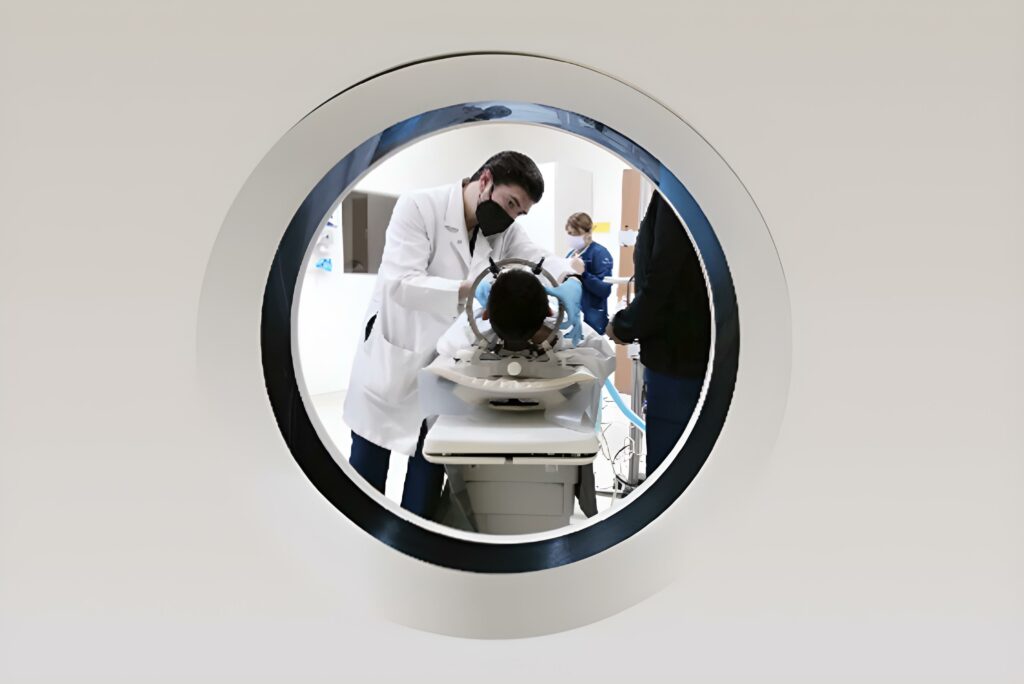Neurosurgeons Font-Réaulx Rojas and Javier Terrazo Lluch performed the first case of stereoelectroencephalography and radiofrequency ablation in Mexico.
Intracranial electrodes make it possible to detect areas in the brain that cause epileptic seizures.
64 surgeries have been performed during the four years of the Epilepsy Surgery Program at ABC Medical Center.
Mexico City, August 29, 2022.– Epilepsy is one of the most frequent neurological diseases, causing recurrent and spontaneous seizures in people, which can trigger numerous neurological, cognitive, and psychosocial consequences.
It is the disease responsible for a significant proportion of morbidity worldwide, affecting more than 50 million people. According to estimates, 49 out of every 100,000 people are diagnosed with some type of epilepsy each year, and this number can be as high as 139 per 100,000 people in low- and middle-income countries.1
Through an appropriate diagnosis and classification of epilepsy, it is possible to establish both its prognosis and the specific treatment that helps in making medical decisions to improve the quality of life of both the patient and their family.
ABC Medical Center’s Epilepsy Specialty Center provides care for patients with seizures or epilepsy while specializing in full-service diagnostic and surgical treatment for patients with uncontrolled or drug-resistant seizures.
In some cases of drug-resistant epilepsy, clinical information, routine electroencephalograms, and imaging studies are not enough to define a surgical treatment and it is necessary to perform tests such as positron emission tomography (FDG-PET), SPECT, or the so-called Phase II which consists of implanting intracranial electrodes.
ABC Medical Center’s Specialized Epilepsy Center is the only one in Mexico that performs the procedure known as stereoelectroencephalography (SEEG), which allows for long three-dimensional recordings to analyze the epileptogenic circuit of the patient, being able to offer a better treatment option with focal ablations where the seizures originate”.
Neurosurgeons Enrique de Font-Réaulx Rojas and Javier Terrazo Lluch performed the first case of stereoelectroencephalography and radiofrequency ablation in Mexico. Procedure in which intracranial electrodes were implanted for the diagnosis and treatment of a patient with seizures generated in certain areas of the brain.
Dr. de Font-Réaulx shares that “thanks to this diagnostic study we concluded that the patient had a cerebral hemorrhage before birth, and we identified the area that caused the seizures, but not only that, we were able to treat him through the same electrode, without open surgery and without pain through focal radiofrequency ablation. The result was successful since the patient did not show seizures again”.
Finally, the specialist adds that epilepsy must be seen as a global health priority, especially when there is preventive management and effective treatments that substantially reduce disability and morbidity and mortality associated with this condition, therefore, the population must know the diagnosis and treatment options that are already available today in specialized epilepsy centers so that they seek an evaluation that establishes treatment options that provide them with quality of life.
Fuente
1 https://www.who.int/es/news-room/fact-sheets/detail/epilepsy



